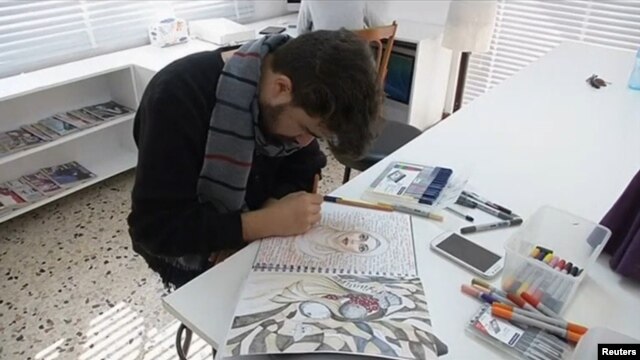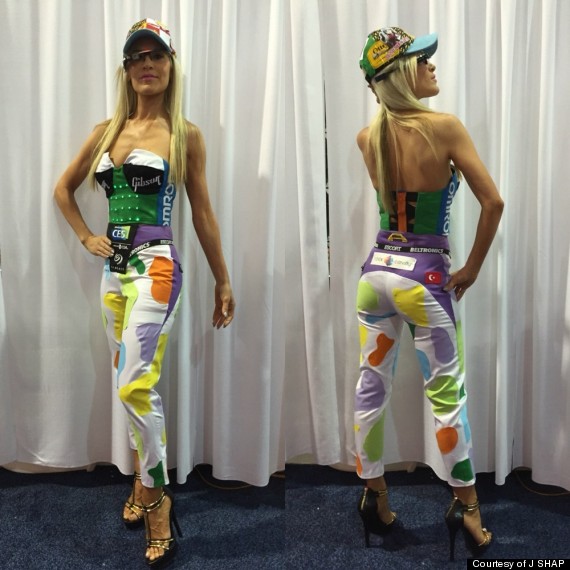A relatively unknown model called Winnie Harlow made waves when she walked
down the Desigual catwalk during New York Fashion Week.
What makes her achievement exciting is she suffers from vitiligo, a chronic
skin condition that causes loss of pigment in the skin.
The 20-year-old Canadian model, whose real name is Chantelle Brown-Young,
created her modelling name as an alter ego to summon confidence when she was
diagnosed with the pigment disorder when she was four years old.
After her NYFW appearance the former America’s Next Top Model contestant
said: “I feel like the industry is very much opening up, widening their eyes.
That’s what people are looking for…something they can relate to, a real
person.”
And in the same week 30-year-old Jamie Brewer became the first model with
Down’s syndrome to appear on the catwalk.

This achievement is made slightly less ground breaking by the fact the
catwalk wasn’t part of the main New York Fashion Week schedule but it’s amazing
none the less.
It’s also indicative of a change in current thinking and a growing demand for
more representative models in the industry.
Jamie Brewer was taking part in the Role Models Not Runway Models show held
at Lightbox in New York. Jamie is an active spokesperson having served on the
ARC Government Affairs Committee for Texas to improve legal rights and
recognition for disabled people. The inspirational model also appeared in
American Horror Story.
After her runway appearance she said: “It’s a true inspiration being a role
model for any young women to [encourage them] in being who they are and showing
who they are."
The move towards better representation hasn’t happened overnight, in fact
it’s been a slow, reluctant crawl.
It was 5 years ago that Debenhams made the decision to use a disabled model
in their advertising campaign.
The high street store used Shannon Murray, a model confined to a wheelchair,
in a photo shoot line-up to promote their Ben de Lisi fashion range.
The 32 year old said at the time, “Another small step towards inclusion and
representation. I hope the images challenge a few misconceptions about
disability; it's been a long time coming.”
Earlier that year Valentina Guerro, a 10-month-old girl from Miami, Florida,
appeared on the cover of a U.S catalogue for Spanish designer Dolores Corte's
latest swimwear collection.
The toddler, who has Down's syndrome, not only fronted the designer's
campaign but also made her runway debut at Miami Swim Fashion Week where she was
carried onto the stage at the end of the fashion show.
The designer said in a statement: “People with Down's syndrome are just as
beautiful and deserve the same opportunities. I'm thrilled to have Valentina
modelling for us.”
However, inspirational stories like Winnie, Jamie and Shannon are still too
few and far between. But things are slowly changing.
In February last year New York Fashion Week marked the first time a model
'walked' the runway in a wheelchair.
Dr. Danielle Sheypuk, 35, made her debut in the Carrie Hammer show after Ms
Hammer made the decision to cast role models not runway models.
The big question of course is whether these examples are just pure tokenism
or are they a real step forward for disability rights?
We clearly still have a long way to go in terms of diversity in the fashion
industry but slow progress is being made.
The crux of the problem is that advertising, whether we like it or not, isn't
just about selling a product. In essence it goes much deeper than that; it's
about selling a lifestyle and this lifestyle is based on a fabricated ideal of
perfection.
Let’s be brutally honest, and as the mother of a boy with a disability I
think I am qualified to say this, disability simply isn't a 'lifestyle' that
many would want to buy. In most people's minds, it's the lifestyle they'd
actually pay not to have.
With this in mind it's not that surprising that advertisers generally choose
to avoid the issue altogether. And of course it's not just disability that falls
outside of the advertisers' idea of perfection.
Size has long been a topic of controversy on the runway. In the world of high
fashion a size 00 is considered the 'norm' and larger models have rarely
appeared on the international runways.
Canadian knitwear designer Mark Fast sent 'plus size' models down the runway
at London Fashion week in 2010, to prove that clinging designs look good on
every body shape.
However, when he used three plus size models the season before his decision
had caused a behind-the-scenes row that ended with his stylist walking out.
But hope is on the horizon. Last September New York designer Zana Bayne used
models of all shapes and sizes for her catwalk debut.
The leather accessories designer's sexy harnesses have been worn by everyone
from Lady Gaga to Beyonce and Gwyneth Paltrow.
"I loved the idea of just representing women: someone with a flat chest,
someone with a full bust, curves, no curves," says Bayne. "I just wanted to
showcase a variety of gorgeous girls.
"Even with my finale model, who is a mother, it was important to showcase
that archetype as well. It's about celebrating all women."
So what will it take for things to keep changing? Models of Diversity founder
Angel Sinclair has been campaigning since 2008 for more diversity in the models
we see in every day life.
She's calling on the fashion, beauty and marketing industries to recognise
the beauty in people of all races, ages, sizes, shapes and abilities.
Passionate, driven and inspirational, Angel explains, “The project I have
been working on solidly for the past 2 years is disability.
"No major fashion brand wants to be the first to say you know what, we are
going to feature disabled models, permanently as the face of our brand.
"In the build up to LFW we’ve been emailing 10 brands every week, every email
is the same 'talk to us, tell us, why aren't you representing us….?' MP Katie
Green has been fantastic, and Caroline Rush from British Fashion Council has
been really helpful and given us some great advice.”
And she had a success with NYFW, where Jack Eyers' appearance in the Antonio
Urzu show made him the first male amputee to take to the Big Apple catwalk -
showing it isn't just with women models that the industry is getting real.
From Bournemouth, Jack was born with a rare from of Proximal Femoral Focal
Deficiency which prevented his right leg from growing properly.
''It all feels so surreal," he said. "It’s pretty overwhelming, I just want
to show that having a disability doesn’t need to hold you back.
"I always said if I was going to do something like this, I want to do it big.
I want people to see me, and to realise that there needs to be more disabled
models walking the runway."
But he wants to be more than a token gesture.
“I think some brands see us as ticking a box,” he says. “Which is all right
to start with, because it means that we’re making headway.
"My dream, though, is to be featured not as some one-off sob story, but
because people see me as a good model.”
Angel has been working towards London Fashion Week and hopes that designers
will use disabled models on the runway. "It's a slow process, but we will get
there. Attitudes are changing."
With LFW kicking off, let's just see.
And if they need any more convincing, they might like to see Jack in action
from a recent Levi's inspired advert for charity Scope...
QueenieAustralia
cheap formal dresses





